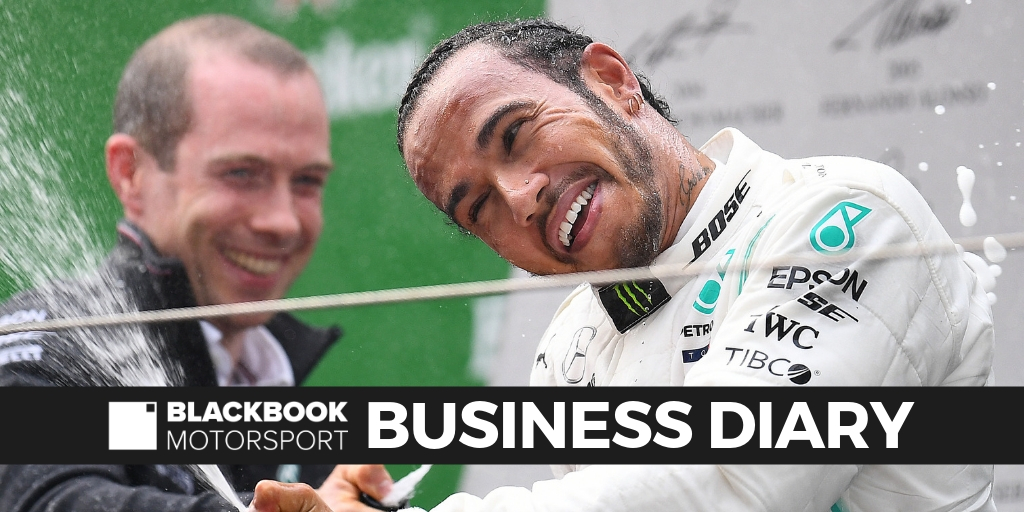Lewis Hamilton took the driver’s championship lead for the first time this season after winning Formula One’s 1,000th Grand Prix with a flawless performance in China.
Hamilton secured the 75th victory of his career and now sits six points ahead of Mercedes teammate Valtteri Bottas.
After Charles Leclerc’s impressive showing in Bahrain, Ferrari well and truly made clear who their top dog is, giving the Monegasque the order to allow teammate Sebastian Vettel to pass. Leclerc went on to finish in fifth place as Ferrari’s internal battle allowed Red Bull’s Max Verstappen to slip into fourth.
Toro Rosso’s Alexander Albon sealed a tenth place finish in a remarkable turnaround from the Red Bull satellite team. Albion crashed heavily in final practice but an excellent rebuild meant the Thai-British driver secured his third point of the season.

Alexander Albon wrecked his Toro Rosso in final practice, only to return confidently to secure a tenth place finish
UK highlight viewers a problem for Liberty
The early signs for Formula One’s transition away from free-to-air TV in the UK are not good, with just 1,658,137 viewers tuning in to watch the Bahrain Grand Prix highlights on Channel 4, according to Broadcasters’ Audience Research Board (BARB) data published by Forbes.
BARB’s data showed that last year, before the start of Sky Sports' exclusive UK rights contract, the average audience for each live race on Channel 4 came to 2.65 million, with the highlights show attracting 2.07 million.
Formula One predicted that viewing numbers for the highlight show would go up with the move of live rights to pay-TV but a combination of rival primetime programming and the delayed broadcast saw the Bahrain Grand Prix highlights bring in Channel 4’s lowest audience for the race since it started showing Formula One in 2016.
This will be a concern for Liberty Media as over the last 11 years Formula One’s general television audience has fallen by 18.3 per cent due to the mass influx of pay TV contracts globally.
The only race for which free-to-air broadcaster Channel 4 has live rights is the British Grand Prix, a contractual obligation to preserve public access to marquee UK sporting events.

Free-to-air UK viewing figures have suffered as a result of the move towards pay-TV contracts
F1 growth in China
Formula One’s growth in China since its debut in 2004 has been exponential, with tickets for this year’s race sold out two months ahead of the event. Ten per cent of tickets were also taken up by overseas customers, highlighting the global appeal of hosting a race in China.
As part of the 1,000th Grand Prix celebrations, Formula One cars drove down the streets of Shanghai to allow fans to be even closer to the action.
The 2018 series saw Formula One's audience in China hit 68 million – the second most popular TV market after Brazil – and a clear beneficiary of the rights returning to free-to-air broadcasting on CCTV.
Yang Yibin, general manager of local organiser Juss Event, said: “After 15 years, we have cultivated a market including professional fans for the sport. I dare to say that over 80 per cent of the spectators are true followers who understand the race. Back in 2004, maybe only 20 percent could tell you what was going on.”
Formula One chief executive Chase Carey hinted at the possibility of a second China race ahead of this year’s Grand Prix.
He told the Shanghai Daily: “Right from the start, we have said that China is one of the parts of the world where we believe our sport has a great potential for growth. There’s definitely room to organize a second Grand Prix and it’s no secret that we have been in contact with various municipalities to evaluate possible locations where another race could be held.”
Engaging with a younger audience
Despite the demand for tickets, the Chinese Grand Prix barely made an impact on social media in the country. On Chinese social media platform Weibo, Formula One’s official account has only attracted 40,000 fans; by way of comparison, the National Basketball Association (NBA) has garnered 40 million.
Formula One does not have profiles on either Douyin or WeChat, which would greatly support the efforts to engage with a younger audience in China. However, Formula One’s generational issues are not just China-related.
The global motorsport series recently revealed that just 14 per cent of its audience are under 25, thus making it even more difficult to engage its wider fanbase via social media. Under its previous ownership Formula One’s efforts on social media were minimal but since Liberty’s takeover it has made a real push in that direction. Last year the total number of followers across Formula One’s primary social media platforms – Facebook, Twitter, Instagram and YouTube – reached 18.5 million, a year-on-year rise of 53 per cent.
China’s unique demands and Formula One’s current lack of youth appeal perhaps explain the series' move to host a dedicated esports event in the country in the near future. With a recent report suggesting that the Chinese esports market could be worth US$3 billion by 2020, Formula One is clearly vying to generate attention among younger generations.
So you’re not quitting then?
I love driving, I love the sensation of speed, I love fighting with these guys, so there's a lot of things that at the moment I really like and I'll miss so that's why it's not an option to quit tomorrow
Ferarri's Sebastian Vettel on those retirement rumours
The Big Picture

The Chinese Grand Prix marked the 1000th race is Formula One's history – 69 years after the first race at Silverstone

